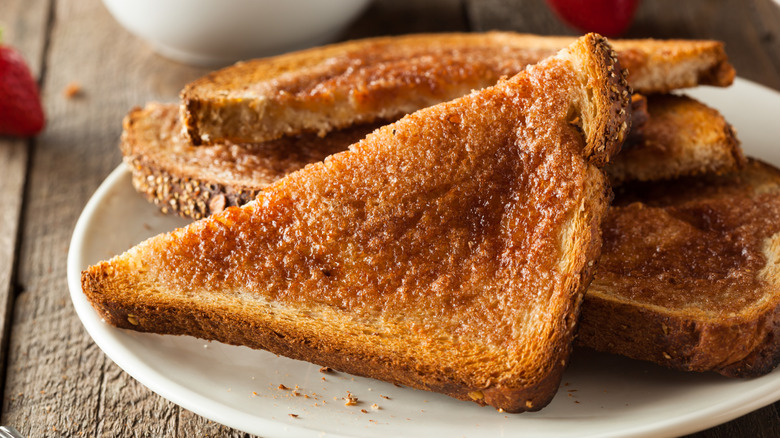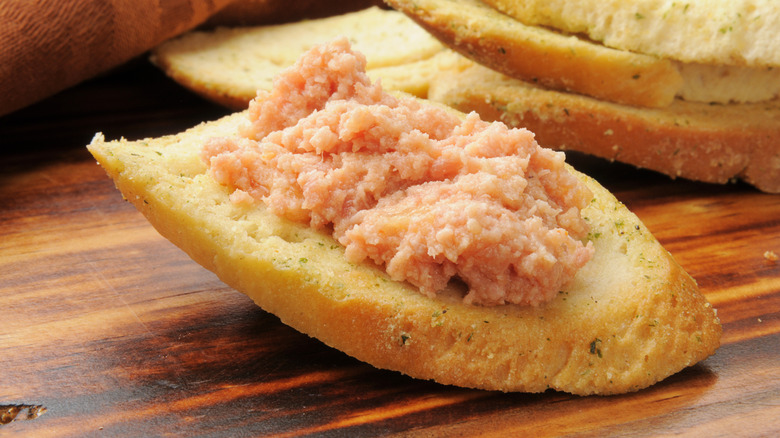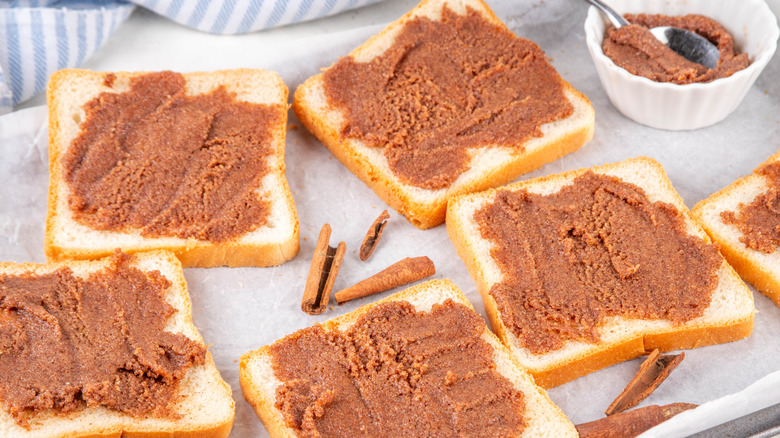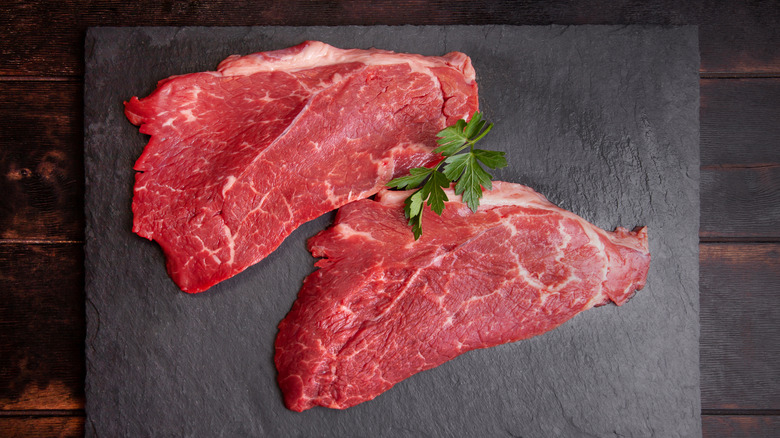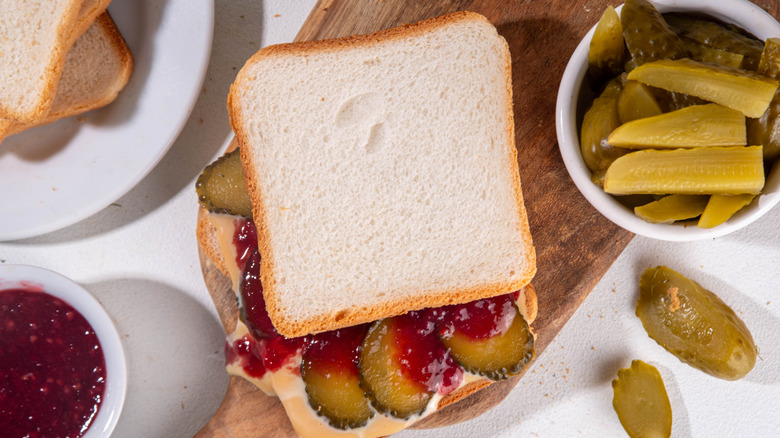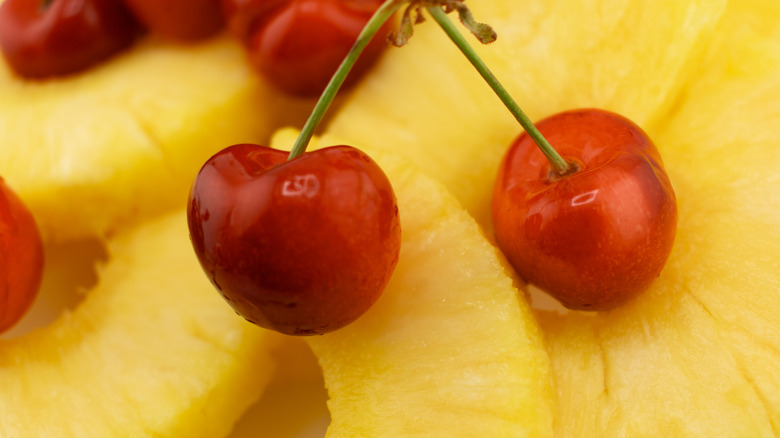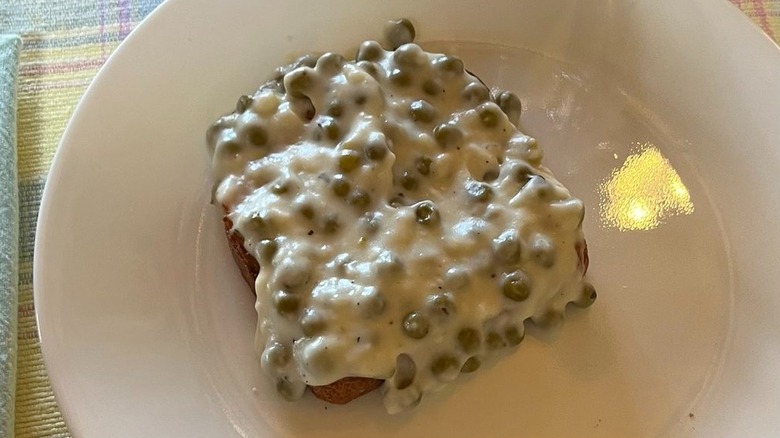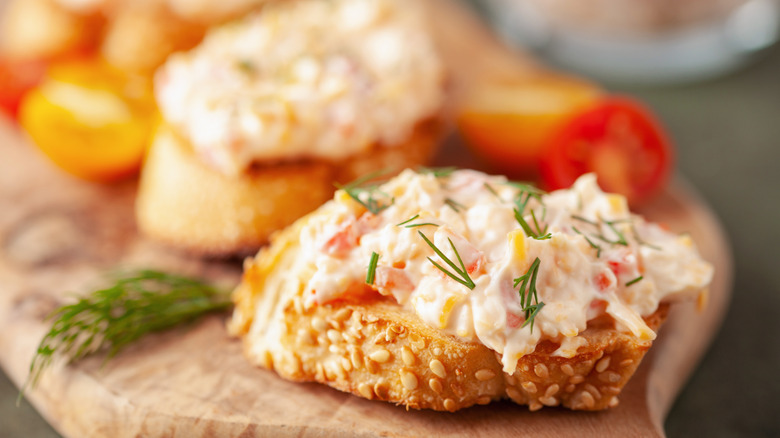10 Classic 10-Minute Dishes That Have Faded From Popularity
We've all been there: It's been a long week, you're just getting home after a relentless day of work, and the idea of spending an hour cooking something feels like torture. These days, it's easy enough to grab one of the literal hundreds of frozen pre-made meals from a store around the corner, or fire up a delivery app and order takeout. Back in the day, though, people didn't have the same luxury. Instead, they had to get good at rustling up their own 10-minute meals to satisfy those hunger pangs without spending all night in the kitchen.
A lot of the classic quick dishes that people would make in previous years are rarely seen nowadays, and to be honest, we can kinda see why. Home cooks from the generations before us often didn't have access to the same wide range of prepared or canned foods that we enjoy today. Instead, they had to get creative with widely available staples and dried ingredients. Creativity often comes from constraint, though, and such classics like tang pie, creamed peas on toast, and peanut butter and pickle sandwiches sprung from the dual needs for speed and resourcefulness. If you're looking to make some cool vintage dishes that won't take the better part of a day to prepare, we've got them right here.
Ketchup spaghetti
Ketchup and pasta: What could be better? Although we're fairly sure that wasn't the question being asked when this frugal dish was invented, in retrospect we can see how satisfying the discovery of its tastiness must have been. Ketchup spaghetti is a dish with a few different versions (contrary to popular belief, it's not just those two ingredients mixed together), but its variations seem to have been developed largely during the Great Depression, when it became a cheap and versatile meal. It's especially well-known in American Jewish communities, with salmon patties often topping the ketchup-covered noodles, the former again becoming a staple during the Depression thanks to the affordability of canned salmon.
While the combo of spaghetti and ketchup was often spruced up with onion, celery, red pepper, and butter, in its most basic form you could simply mix the two primary ingredients of this dish and call it a day. The only time it took was the minutes required to cook the noodles; once they were done, you just had to squirt the ketchup on, mix, and enjoy. This dish has arguably been replaced by the ubiquity of jarred tomato sauce, but we think you should give it a try at least once in your life.
Tang pie
If you thought that tang had no place in pie, you should think again. Back in the 1960s, Tang juice powder became an unlikely ingredient in a near-instant pie that wowed people with its lurid tones and zesty flavor. The recipe for Tang pie was created by General Foods, the company that made the powder, and it promoted it by proclaiming it to be a space-aged treat that even astronauts could enjoy. Given that Tang was famously used by NASA as a powdered drink that its astronauts could take to space with them, it wasn't a huge stretch for General Foods to give the pie this slant — but we'd imagine it would have been pretty messy up there in orbit.
To make Tang pie, it was as simple as mixing together Tang powder, Cool Whip, cream cheese, and condensed milk. Once everything was combined until the mixture was thick and luscious, it was then heaped onto a pre-made graham cracker crust. Officially, you then had to wait a couple of hours while the pie chilled in the fridge until it was ready to eat. We can understand why this was a wise move (it would have helped the pie set properly), but to be honest, you could have also sliced into it the moment the mixture joined the pie crust. It was just as delicious.
Deviled ham on toast
Deviled ham has a very appropriate name: For a lot of people, this foodstuff was (and is) the work of dark forces. This canned ham spread has grossed people out since it first became widely available in 1868 due to its slimy texture and overly salty flavor, not to mention the general strangeness of eating processed, creamy meat. However, people have found plenty of uses for it over the years, and there's no denying that it was once an incredibly convenient way to add animal protein to a meal without having to cook it first. That's likely why deviled ham on toast became, for a moment, a popular meal that took just a few minutes to prepare.
Making deviled ham on toast was as simple as opening a can of ham, spreading it onto some toasted bread, and popping it on a plate. If you had a little more time on your hands, you could augment the deviled ham with ingredients like mayo, cream cheese, relish, mustard, and cayenne pepper. Other people would take advantage of other convenience foods like canned cream of chicken soup, using it as a topping for deviled ham toasties to make a kind of croque monsieur sandwich. It's not a combo you see much nowadays, and we can't say we're sad about it — but if you're ever feeling the need for nostalgia, it'll take no time to whip up.
Cinnamon toast
Few foods hit the spot as effectively as cinnamon toast — and while we can see why it's not as popular as it once was, we're not thrilled about it. Cinnamon toast has a hugely lengthy history as a quick meal, first appearing in its most basic form back in the 1400s in Europe. Slowly but surely it became standardized as a dish, and the combination of toast, butter, sugar, and cinnamon was enjoyed by both children and adults alike across America in the 19th and early 20th centuries. In 1984, the release of Cinnamon Toast Crunch cereal took this treat and made it even more convenient to consume: All you had to do was add milk.
This is the kind of dish that you can throw together in a jiffy, and while it's not totally out of the picture these days, it's definitely way less common than it used to be. Nowadays, people tend to incorporate cinnamon into French toast, or create cinnamon toast recipes with a bunch of extra ingredients that take it a little far away from what made it so appealing in the first place: its simplicity. While these versions are definitely tasty, there's nothing like the real thing.
Minute steak on onion rolls
Minute steak may still be around today, but the use of it — especially in full-blown meals — is way less common. Typically confused with cube steak (though, it's not the same thing at all), minute steak is a thin, tenderized piece of beef that cooks rapidly thanks to its dimensions and lower density. The speed with which you can prepare it gives minute steak its name, but for some reason, chefs would often use this cut of beef in recipes that still took ages to prepare due to the other elements involved.
Minute steak on onion rolls, however, was a true 10-minute recipe. All you had to do was sear a couple of minute steaks on each side before tossing them into some buttered onion rolls, finishing each steak off with a drizzle of bottled blue cheese dressing. The use of several prepared ingredients here didn't make this dish any less flavorful, and it was an ideal time-saving lunch that basically recreated all the tastes of a steak dinner in one handheld package.
Molasses milk
Looking for instant comfort first thing in the morning? Molasses milk is the way to achieve it — or it used to be, anyway. The simple combination of molasses and milk is slightly less common today, but in Colonial-era America it was a traditional beverage given to children. A common sweetener, molasses was also used in countless other dishes and ways: It was often made into syrups, added to coffee and baked beans, and harnessed to perk up baked dishes.
Soon enough, refined sugar came along and knocked molasses off its pedestal as the sweetener of choice, but its appeal remains strong today. Molasses gives food a treacly, rich flavor, and it helps to add depth and a pleasant thickness in milk. Molasses milk could also be spiced using cinnamon or cloves, or it could be made slightly lighter by adding honey. It's now seen as a bit of an old-fashioned beverage, and breakfasts today have become a little more substantial and complex. For a trip down memory lane, though, you can't beat it.
Peanut butter and pickle sandwiches
Don't knock it until you've tried it, people. Peanut butter and pickle sandwiches may seem like something conjured up as a kind of bizarre food challenge, but it used to be a fairly common meal back when times were tough. The combination first gained traction back in the Great Depression, likely due to the primary ingredients being both affordable and shelf-stable, though subsequent spins on the dish used pickle relish instead of dill pickles. Nowadays, peanut butter and pickle sandwiches have a cult following, but they're nowhere near as popular as they once were.
We think that's a bit of a shame, to be honest. Mixing peanut butter and pickles makes for a surprisingly complex meal that's also rather filling. Taking a mere minute or two to put together, this sandwich highlights the weirdly satisfying interplay of creamy peanut butter and sharp pickle, and the addition of jam, honey, or maple syrup creates a salty-sweet-sour dynamic that's seriously moreish. However, it's fair to say that its slight strangeness has prevented the peanut butter and pickle sandwich from making a full-on comeback.
Candle salad
Of all the 10-minute dishes out there that we don't make today, few are as eyebrow-raising as the candle salad. This recipe was first put into print in 1916 and became popular during the 1920s around the same time that bananas and pineapples were starting to become a regular fixture in American kitchens. Over time, its appeal continued to grow, and by the '50s it was a dinner party staple.
Over time, though, its popularity began to fade — and, retrospectively, we can see why. This salad consists of a pineapple ring perched on a bed of lettuce leaves, with a banana placed in the center of the ring. This banana stands upright with the tapered tip facing upward, and on that tip balances a maraschino cherry, with whipped cream dribbling down the side of the fruit. It's meant, of course, to resemble a candle, but its actual appearance is far more risqué. We're amazed that people back in the day didn't quite see what this salad really looked like. Hey, it was a more innocent time, guys.
Creamed peas on toast
We've gotta say that we're not super surprised that creamed peas on toast fell out of fashion. The mixture of canned peas, white sauce, and toast doesn't exactly scream elegance, after all. That's why it's pretty surprising that, for a while, creamed peas on toast was considered a luxury food, with some folks in the '70s and '80s seeing it as the height of sophistication. Before it developed such a sense of esteem, it was acclaimed for its ability to provide sustenance on a budget during the Great Depression.
This recipe is one that is typically handed down from person to person, and if you're not in the know, there's no way you'd make it. Creamed peas on toast is quick, easy, and requires minimal ingredients to prepare, so it's easy to see why this was a hit in cash-strapped times (though, it's less clear why people once considered it a luxury). The nutritionally dense peas would have also made this dish more filling than it perhaps first appeared. Regardless of all these positives, though, it doesn't have a lot of flavor — and the lumpy, vaguely sickly appearance definitely puts us off.
Pimento cheese open-faced sandwiches
Pimento cheese has a lengthy history, and while it's not the most popular ingredient these days (despite attempts to bring it back), for a while there it was a quick way to inject a meal with flavor. Occasionally, it also acted as the primary flavor. This was the case with pimento cheese open-faced sandwiches, a recipe that appeared in "The Household Searchlight Recipe Book" in 1937. Rather than use ready-made pimento cheese, the recipe instructed home chefs to melt cheese with milk, cornstarch, and butter, and then add chopped pimentos. Pickle relish was added to give the mixture some extra sweetness, and then the finished cheese product was spooned over slices of bread.
This recipe was far from the only use of pimento cheese in speedy dishes. Regular pimento cheese sandwiches were common from the start of the 20th century and onward, with the cheese also commonly used as a stuffing or as an ingredient in salads. After World War II, pimento cheese started to lose its popularity, and it became an ingredient that largely showed up in Southern cuisine. It's made a bit of a comeback as a retro food in recent years, but it hasn't hit the big leagues it once used to dominate.
